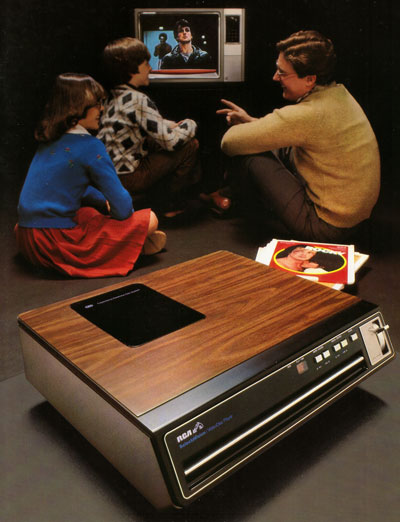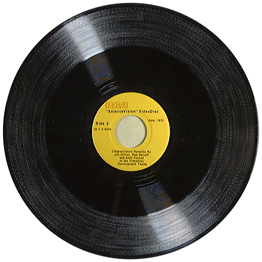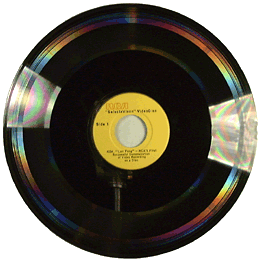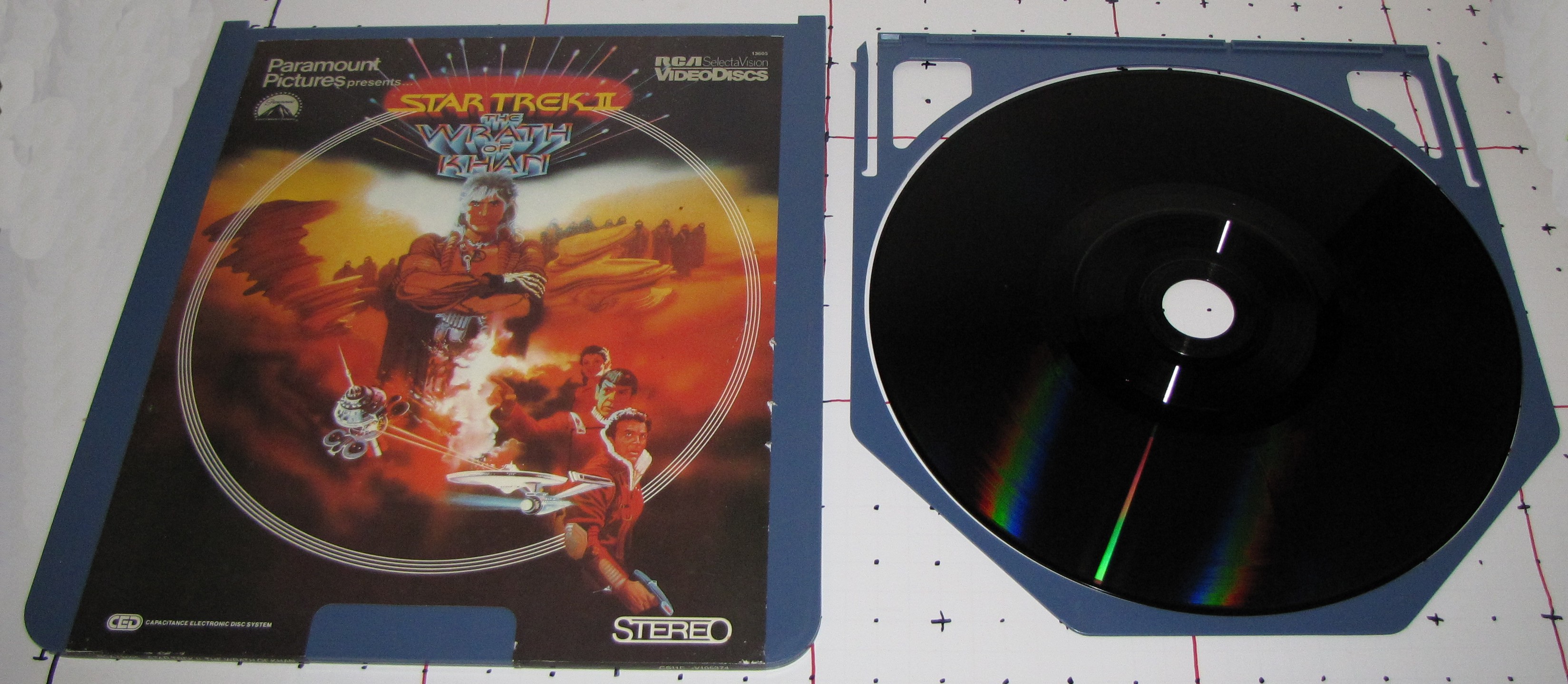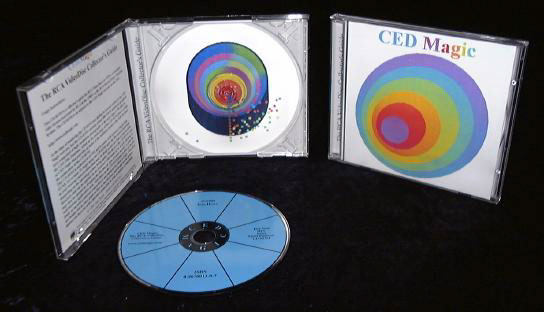Videodisc
As an image plate is a series of memory techniques in which video data and mostly clay on a rotating plate are recorded.
Initial developments
In 1927, the Scottish inventor and television pioneer John Logie Baird developed the first video disc player (see a consumer electronics), the stored, 30 -line television images of 78 rpm mechanically groped on shellac records and reproduced on a " telescreen ". A sound was not possible with this technique, the image plate could also not keep pace with the rapid development of higher television resolutions.
TED image plate
The first -known video disc was presented in June 1970 in the United Kingdom and the Federal Republic of Germany, together with a matching player ( video disc player ); the system worked after the TED system (short for " Television Disc" ), which had been developed by a consortium consisting of AEG- Telefunken, Teldec and Decca, within five years. At this time, only black and white images could be reproduced for 1972 series devices have been announced but with color display.
The only reader TED videodisc on the German market, the TP1005 by Telefunken, was finally unveiled in 1973 at the Berlin Radio Exhibition and came in early 1975 in the trade. The device was 46 cm wide, 16 cm high and 31 cm deep and had due to its steel casing, a weight of about 14 kg, which earned him the nickname " flat vault" earned.
Disadvantages of the TED system were in addition to the high prices and the high sensitivity of the plates and the short playing time. After less than two years, the TED System disappeared in Germany again from the market.
Technology
The TED video disc has a diameter of 21 cm, consists of a thin, flexible plastic film in a protective case made of cardboard and has space for about ten minutes the picture and sound. It is mechanically scanned with a diamond needle and floats when played on a cushion of air on which it rotates 45 times faster (1500 rpm) than a traditional analog record. Two recorded in the CAV method PAL fields are recorded per revolution.
Plates
TED plates were developed in Germany by the company Decca, Institute of modern teaching methods produced ( under the brand name "TELE -Med " ), Teldec Intertel, Telefunken, Ullsteinhaus AV, UFA - ATB and videophone. The overall program included the lines " Popular knowledge" (Hobby, Science, Culture, Countries and cities, health and fitness ), " Entertainment " ( Music, Movie, Cartoon, Sport), " Children and Youth Program" and " training / education " (language courses, vocational, medical education ).
Examples of TED plates:
- Germany three times (first audio-visual book in the world, contained eight imaging plates )
- Sunken Cities - Living Gods ( documentary about the South American Mayan Peoples)
- Exotic animal encyclopedia ( animal encyclopedia in 26 episodes, a sequence contained two image plates)
- Speed Racer (the first German television broadcast anime)
Video disc
From 1970 worked in the Headquarters of the Deutsche Grammophon Gesellschaft ( later PolyGram ) in Hannover in the development of video imaging plate. This video disc a new, working with laser beam scanning optical system ( "Laser Vision" ) was presented. The plates were similar to their format of the long-playing record and were produced on a re-engineered records Tandem Press.
LaserDisc
With the Philips Laser Disc set in 1980 before a further development of the TED system that operates purely optical laser beam scan. It is not to be confused with a digital method. However, it offers the best picture quality of an analog medium. The stored data can be found under a smooth layer of protection as tiny elongated depressions ( pits ) in a thin metal film on the plastic support ( plate ) and are arranged along a spiral track. On an image plate with 30 cm diameter were on each side up to 54,000 still pictures or 34 minutes of running pictures, but also a mixture of both are saved. This laserdisc is the most famous analog image plate.
Today, the laser disc is practically irrelevant. However, it does in many ways than the predecessor introduced in 1982, and then initially designed only for sound recording Compact disc or later CD -ROM.
Examples of movies on laser disc:
- Captain Harlock
- Escape from the Planet of the Apes
- Star Wars, Episode IV - VI
Presence
Today common optical disk formats are mainly:
- Those based on the CD- ROM formats Video CD ( VCD), SVCD, etc.
- The DVD, as well as
HDTV - ready formats:
- CD -ROMs with stored movie files with modern compression, eg DivX or H.264, can also store HD movies in the order of up to an hour depending on the material. Here, if a PC is used as a playback device, more sophisticated codes such as the Hi10P profile possible.
- The HD-DVD,
- Blu- ray Disc, as well as
- HD VMD as yet little-known variant.
The term " image plate " is fairly uncommon for today's formats.




